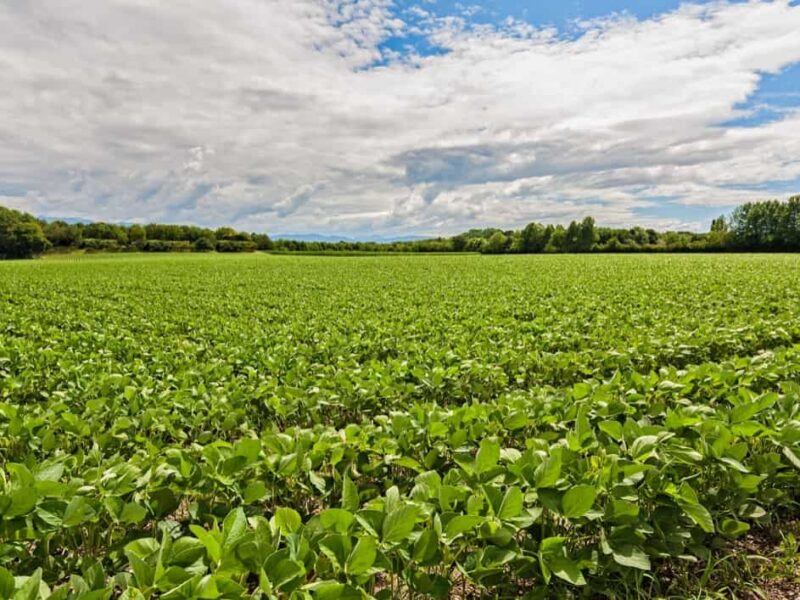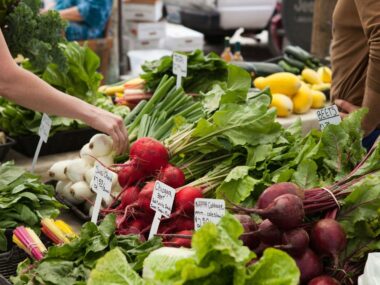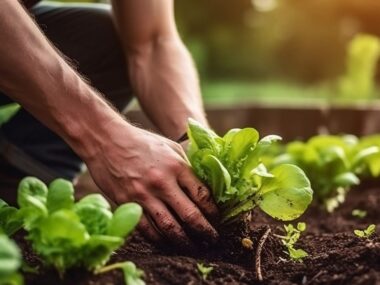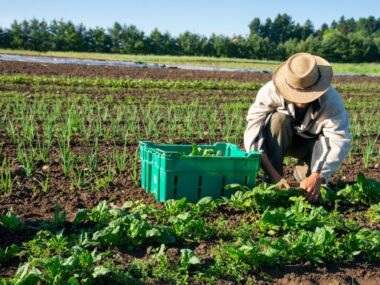Overview of Soybeans
Soybeans (Glycine max) are a leguminous crop that holds significant economic and nutritional value. They are a major source of protein and oil, used extensively in food products, animal feed, and industrial applications. Originating in East Asia, soybeans have become a global agricultural commodity.

Benefits of Soybean Cultivation
- High Protein Content: Soybeans are rich in protein, making them essential for both human and animal diets.
- Oil Production: Soybean oil is widely used for cooking and as an ingredient in various food products.
- Soil Fertility: Being a legume, soybeans fix atmospheric nitrogen, enhancing soil fertility for subsequent crops.
- Economic Value: Soybeans are a major cash crop, contributing significantly to agricultural economies.
Types of Soybeans
- Field Soybeans: Commonly grown for their seeds, which are processed into oil and meal.
- Edamame: Young, green soybeans consumed as a vegetable.
- Tofu Soybeans: Varieties specifically grown for tofu production, known for their higher protein content.
- Industrial Soybeans: Varieties bred for specific industrial uses, such as biodiesel production.
Climate and Soil Requirements
- Climate: Soybeans thrive in warm, humid climates with temperatures between 20°C and 30°C.
- Rainfall: Adequate rainfall, typically 500-800 mm during the growing season, is essential for optimal growth.
- Soil: Prefers well-drained, fertile soils with a pH of 6.0-7.5. Proper soil preparation includes plowing and adding organic matter to improve soil structure and fertility.
Stages of Soybean Cultivation
- Land Preparation: Involves plowing, harrowing, and leveling the field to create a suitable seedbed.
- Seed Selection and Treatment: Use high-quality, disease-resistant seeds. Seed treatment with fungicides and insecticides can protect seedlings from early pests and diseases.
- Sowing Methods:
- Row Planting: Seeds are sown in rows with adequate spacing to ensure proper growth.
- Broadcasting: Seeds are scattered evenly across the field, though less common due to potential uneven growth.
- Water Management: Ensure consistent moisture, especially during flowering and pod formation stages. Avoid waterlogging by ensuring proper drainage.
- Fertilization: Apply balanced fertilizers, including nitrogen (although in smaller amounts due to nitrogen fixation), phosphorus, and potassium.
- Weed Control: Use manual weeding, herbicides, or mulching to control weed growth.
- Pest and Disease Management: Monitor and manage common pests like aphids, soybean beetles, and diseases such as soybean rust and root rot.
- Harvesting: Typically occurs 90-120 days after planting, depending on the variety. Harvest when pods are fully mature and dry.
- Post-Harvest Processing: Includes drying, cleaning, grading, and storage to ensure the soybeans are ready for market and consumption.
Water Management in Soybean Cultivation
Effective water management is crucial for soybean cultivation:
- Irrigation Systems: Use methods like drip or sprinkler irrigation to maintain adequate soil moisture.
- Rainfall Harvesting: Collect and store rainwater for supplemental irrigation during dry spells.
- Drainage Systems: Implement proper drainage to prevent waterlogging and root diseases.
Fertilization Practices
Balanced fertilization is key to maximizing soybean yield:
- Nitrogen (N): Soybeans fix atmospheric nitrogen through root nodules, reducing the need for additional nitrogen fertilizers.
- Phosphorus (P): Important for root development and energy transfer within the plant.
- Potassium (K): Enhances disease resistance and overall plant health.
- Micronutrients: Ensure adequate levels of micronutrients like iron, zinc, and molybdenum for optimal growth.
Common Pests and Diseases
- Aphids: Small insects that suck sap from the plant, reducing vigor.
- Control: Use insecticides, natural predators like ladybugs, and resistant varieties.
- Soybean Beetles: Feed on leaves and pods, causing significant damage.
- Control: Use insecticides and crop rotation to manage populations.
- Soybean Rust: A fungal disease that affects leaves, reducing photosynthesis.
- Control: Use fungicides, resistant varieties, and proper field sanitation.
- Root Rot: Caused by soilborne fungi, leading to root decay.
- Control: Ensure proper drainage, use resistant varieties, and apply fungicides.
Harvesting and Post-Harvest Practices
- Timing: Harvest when 95% of the pods have turned brown and seeds are hard.
- Methods: Use mechanical harvesters or manual methods, depending on the scale of cultivation.
- Drying: Reduce moisture content to 12-14% for safe storage.
- Cleaning: Remove debris and damaged seeds to ensure quality.
- Storage: Store in cool, dry conditions to prevent spoilage and pest infestation.
Sustainable Soybean Cultivation Practices
- Crop Rotation: Rotate soybeans with other crops like maize or wheat to break pest and disease cycles and improve soil health.
- Cover Crops: Plant cover crops during the off-season to protect and enrich the soil.
- Integrated Pest Management (IPM): Combine biological, cultural, and chemical methods to manage pests sustainably.
- Organic Farming: Avoid synthetic chemicals, using organic fertilizers and natural pest control methods.
Innovations in Soybean Farming
- High-Yielding Varieties (HYVs): Developed to increase productivity and resist diseases.
- Genetically Modified (GM) Soybeans: Engineered for traits like pest resistance and herbicide tolerance.
- Precision Agriculture: Uses technology like GPS, drones, and satellite imagery for efficient field monitoring and management.
- Conservation Tillage: Reduces soil erosion and conserves moisture by leaving crop residues on the field.
Economic Importance of Soybeans
- Global Trade: Major exporting countries include the USA, Brazil, Argentina, and Paraguay. Importing countries include China, the European Union, and Japan.
- Employment: Provides livelihoods for millions of farmers and workers in related industries.
- Food Security: Essential for the food security of many developing nations, providing a crucial source of protein and oil.
Environmental Considerations
- Water Use Efficiency: Implement practices like drip irrigation to conserve water.
- Soil Health: Use crop rotation and organic amendments to maintain soil fertility.
- Climate Change Adaptation: Develop and adopt resilient soybean varieties and farming practices to cope with changing climate conditions.
Challenges in Soybean Cultivation
- Climate Variability: Unpredictable weather patterns can affect water availability and crop health.
- Pest and Disease Pressure: Requires constant monitoring and management.
- Labor Shortages: Mechanization and improved labor practices are needed to address this issue.
- Market Fluctuations: Prices can be volatile, impacting farmer income.
Conclusion
Soybean cultivation during the rainy season presents a unique opportunity to leverage natural water resources for optimal growth. By understanding the requirements, best practices, and challenges associated with soybean farming, farmers can enhance productivity, ensure food security, and contribute to the global soybean supply. Sustainable practices and technological innovations will play a crucial role in meeting the future demands of soybean production while preserving environmental health.










